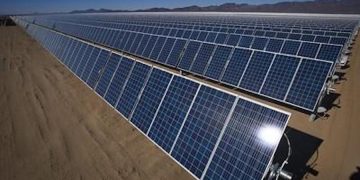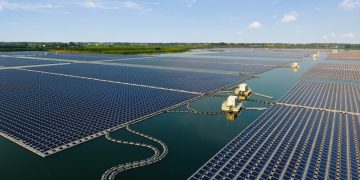The renewables industry made impressive progress in 2019 as the United States continued to switch from oil and gas propelled energy to focus on solar and wind. With help from various economic factors, solar has become a cheaper form of energy, while the addition of storage has made it more reliable.
The 2020 Sustainable Energy in America Factbook was published by BloombergNEF and gives some helpful insight into the trends and changes in the solar industry. Trends over the last ten years have included the transition from gas fired generation to renewables, specifically in the mid-Atlantic states in Eroct and California. Solar and wind generated power are in the lead for this transition into renewable energy. In 2019, solar additions rose from 9.9 GW to 11.1 GW, specifically in areas with high sun such as Texas. This growth was due to the challenges of large-scale projects and permits becoming less significant than they were in 2018.
With renewable energy on the rise, it has accounted for 71% of all new power installations in the past year, which is the highest this statistic has ever been. Companies also began to get involved with the support of production for clean energy as they purchased 13.6 GW of this clean energy through power purchase agreements. Again, most of this progress was made in Texas, which accounts for almost half of these contracts, followed by the PJM market. The majority of contracts signed in Texas have also been for solar, showing that the solar industry is one of the leaders in clean energy.


Utility-scale solar installations in 2019 were expected to increase from 2018 by 14%, which would be the addition of about 7.3GW. The development of solar thermal facilities have been halted in 2019 as well, and investors seem to be focusing specifically on PV. The majority of this solar growth can be accredited to the tax credits that are involved within this industry. The federal Investment Tax Credit requires projects to meet certain criteria, and will then award up to a 30% tax credit until 2023. In 2019, the tariffs on bifacial panels were also changed to be exempt, which further motivated developers through the financial advantages the solar industry had to offer.

Energy demand also continued growing in wholesale markets during 2019. The increase in MISO, PJM, Ercot, California and New England offset the slight decline in New York. Much of this energy demand has been allotted to emergency response services and reserve markets. In Ercot, 1.7 GW of demand response allows for reserves and frequency regulation. Storing energy to increase reliability has rapidly grown despite the fact that economic growth and energy use have “decoupled†from increased efficiency. In the past ten years the U.S. economy has grown up to 25% (GDP) while the energy use has only risen 6.6%. This increase in efficiency has been a great trend to see, although the energy productivity had slipped slightly last year.
This need for efficiency and reliability of renewable energy has pushed for the trend of solar storage to begin to be the new norm. Various companies have realized the value of storage, and now co-located PV and storage projects have become mainstream within the industry. Hawaii, California, and the Southwest region have led the way by building nearly 75% of these PV+S projects in the country. Again, this growth of 8.3GW of solar and 6GW of paired capacity announced in 2019, is due to tax cuts. The cost of battery systems has fallen, but the storage and batteries allow claim credits worth up to 30% of the capital expenditure. Battery costs have fallen 13% in the past year and 87% over the past decade, which shows how this industry is changing quickly.

Between 2018 to 2019, the commissioned capacity of energy storage increased by 20% in PJM. California has become the largest market in the US, surpassing PJM in the past year. New York, New Jersey and Texas all increased their installations by more than 20MW of capacity each. Solar storage has been a new advancement heavily highlighted in the news within the past year, but it is also the key to making this energy efficient as it develops. Solar and renewable energy in general have flourished and become a profitable opportunity for investors as these new tax cuts have been made, and material prices dropped. Solar specifically is not the pricey form of energy that it used to be thought of, and is now an ideal way for energy to be created in a cheap, clean, and profitable mannar. In the Northwest, New York, and California it is clear that the renewables industry is thriving and almost matching the energy created by other sources. While in other regions, there is room for opportunity and growth as the renewables are on an upwards trend.









